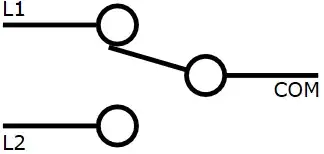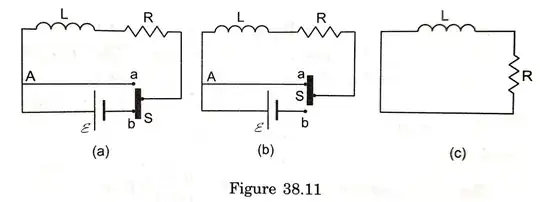The following image and statement are from my textbook Concepts of Physics on the chapter "Electromagnetic Induction", topic 38.6 "Growth and decay of current in an LR circuit", sub-topic "Decay of current":
Consider the arrangement shown in figure (38.11a). The sliding switch $S$ can be slid up and down. [...] The special arrangement of the switch ensures that the circuit through the wire $Aa$ is completed before the battery is disconnected.
I don't understand the reason behind the usage of a sliding switch. What happens if we use the following switch instead of a sliding switch?:

It's stated that the sliding switch ensures that electrical contact is made with the end $a$ before it looses contact with $b$. What if we conduct the experiment the other way round? I think both methods should make no difference, however, it would be helpful if you could explain why we need to short circuit the battery first and then remove it out of the circuit?

